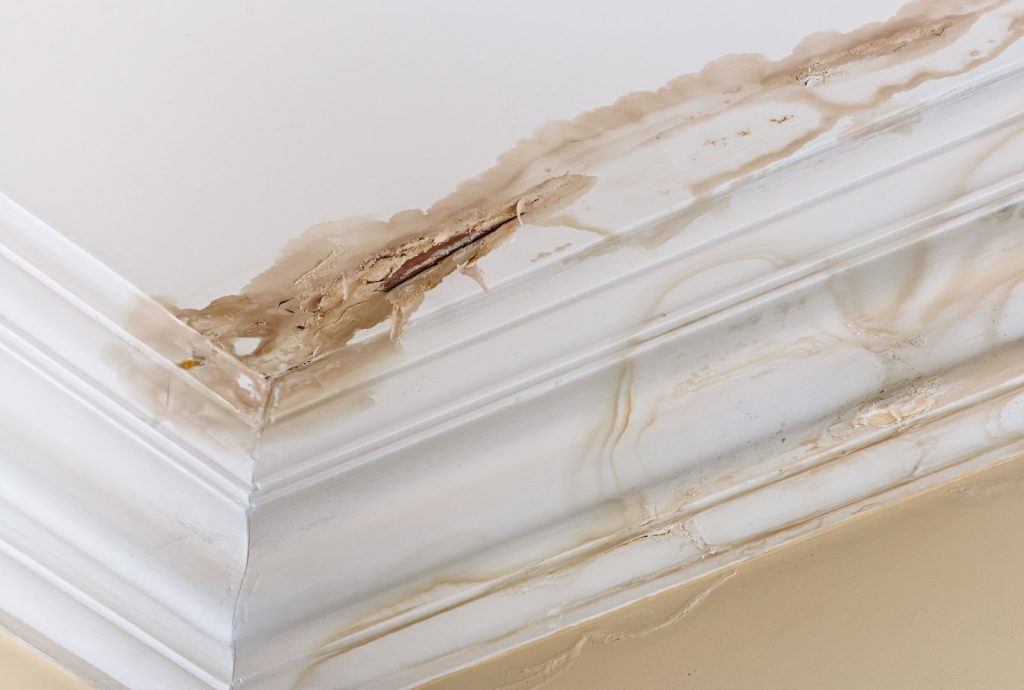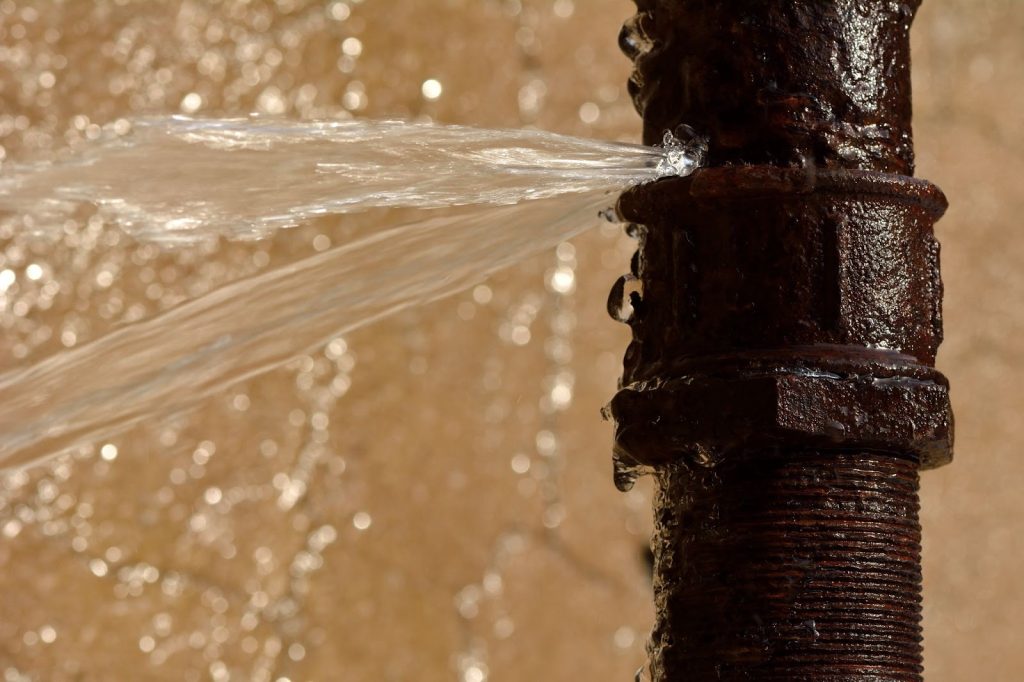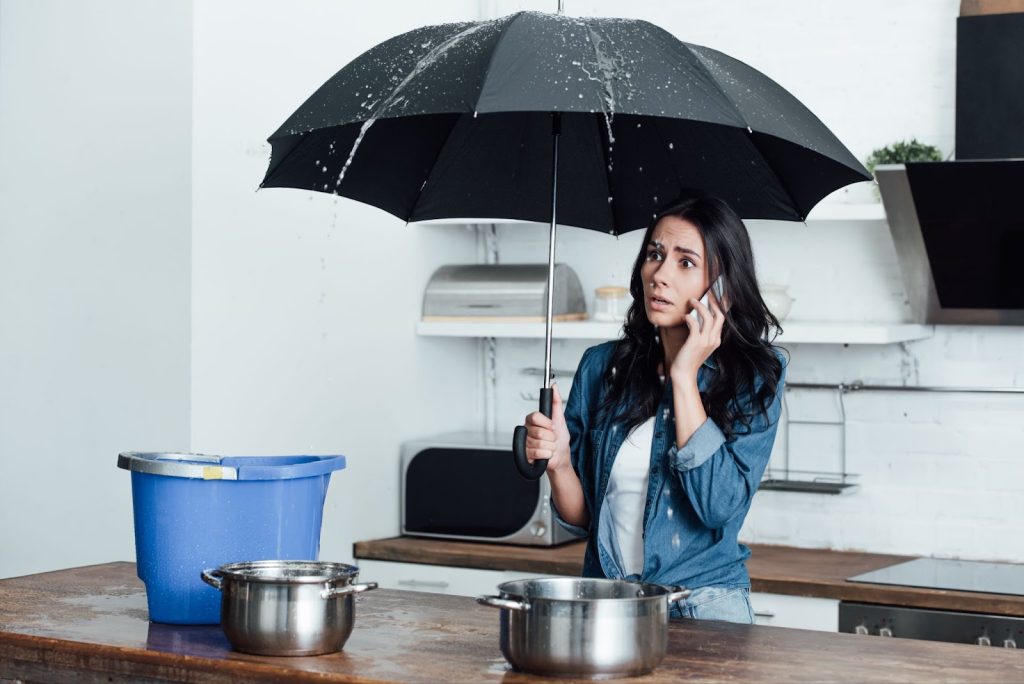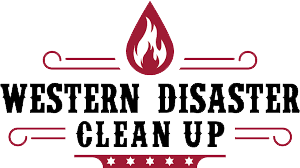Catching water damage at its inception is a game-changer. Early detection means fewer repairs, saving both time and money. Additionally, the sooner you spot and address water damage, the better you’ll protect the overall health and safety of your living or working environment.
On the other hand, undetected water damage poses more than just an aesthetic concern. Over time, hidden water damage undermines the structural integrity of a building, promotes the growth of mold and mildew, and even leads to health problems for inhabitants. The longer these issues remain unresolved, the higher the costs of eventual repairs and restoration.
Understanding the signs of water damage and taking prompt action often prevents minor issues from escalating into major headaches. So, let’s dive into the tell-tale signs and keep our spaces safe and sound!
Visible Stains and Discoloration
Visible stains and discolorations are clear signs of water damage. On walls, look for yellow or brown patches, which may vary in size and might feel wet or dry.
Ceilings might display darker spots, especially after heavy rain or upper-floor leaks. These often expand if not addressed and might even bulge due to pooled water. Materials like wood show dark rings or patches when damaged, while tiles might appear dull and grimy.
Remember, as stains darken over time, they hint at worsening water damage, not just on the surface but possibly within structures. Addressing these early helps prevent more extensive damage.
Unpleasant Odors
Our noses often detect issues in our homes before our eyes. A musty scent can point to hidden water damage and potential mold growth.
When moisture gets trapped in areas behind walls or beneath floors, it creates an ideal environment for mold and mildew. These organisms flourish in damp spaces, feeding on common household materials like wood and drywall.
As they grow, they release compounds that produce that recognizable earthy, stale smell. This odor isn’t just unpleasant; it’s a warning sign of water damage and mold presence. Trust your senses and investigate any unusual scents in your home.
Peeling Paint or Wallpaper
Walls showcase our style through paint or wallpaper. When they begin to peel or bubble, it’s more than just a design flaw — it indicates deeper issues.
Water’s impact on adhesives is key. Paint and wallpaper depend on adhesive qualities, which weaken with moisture exposure. For paint, trapped water leads to bubbling or cracking, eventually causing peeling. Wallpaper, being layered, easily traps water, weakening the adhesive and causing bubbling or peeling.
Addressing these issues revives your wall’s aesthetics and prevents further water damage. Always approach wall health proactively.
Sagging Walls and Ceilings

Homes, while sturdy, have points of vulnerability. Sagging walls and ceilings are key indicators of deeper structural issues.
The reason? Building materials, like drywall and wood, only absorb so much moisture before their structure changes. Excessive moisture makes these materials heavier, causing sagging. Continued exposure weakens these materials further, compromising their structural integrity.
Walls that sag might seem minor, but they pose risks:
- Collapse Potential: Weakened, water-logged ceilings or walls might suddenly fall, causing harm or property damage.
- Mold Growth: Persistent moisture often means hidden mold, a health hazard.
- Electrical Threats: Water near electrical setups can cause electrical fires or shocks.
While sagging structures are concerning, early detection empowers homeowners to act swiftly, ensuring safety and averting hefty repair costs.
Flooring Issues
Floors play a pivotal role in our daily life. If you’ve observed unusual shifts in your flooring, water damage may be at play. Let’s quickly decode these signals.
Swollen wooden floors are characterized by the visible expansion of wooden boards, particularly at the edges, resulting in an uneven surface. This expansion occurs because wood naturally absorbs moisture. If this issue isn’t promptly addressed, it might lead to more severe structural damage and mold growth.
Similarly, when it comes to tiles, you might notice some feeling loose or appearing raised. The root cause is often water seeping underneath the tiles, which compromises the adhesive bond. This disturbance impacts the tile’s appearance and poses a potential safety risk.
Carpets that retain consistent dampness or emit a musty odor exhibit signs of trapped water. These carpets become a breeding ground for mold and mildew without adequate drying. It’s essential to remain vigilant to these flooring cues. By responding promptly, you’ll ensure the longevity of your floors and maintain a healthy living environment.
Mold and Mildew Growth
Mold and mildew, often associated with water damage, have distinct features and implications for our homes. Mold typically appears fuzzy or slimy in various colors, while mildew presents as a powdery surface stain in white or gray.
While mold grows in patches and penetrates materials, mildew spreads on surfaces. Both thrive in moist environments, making bathrooms, kitchens, basements, and attics their preferred habitats. They’ll also make their way under carpets or behind wallpapers.
Beyond their unsightliness, they also pose health risks, triggering allergies, respiratory issues, and in prolonged exposures, more severe health problems. Awareness and timely action against water damage helps prevent these issues, ensuring a healthier living environment.
Sounds of Running or Dripping Water
Unusual water sounds (like dripping or running) in your home are more than mere background noise — they’re early warning signals of potential issues. Your home communicates in various ways; these auditory cues hint at hidden problems. These sounds might suggest concealed leaks within walls, beneath floors, or above ceilings.
Plumbing, roof issues, or upper-level leaks could be the culprits. It’s essential to take these sounds seriously, as they offer a chance for early intervention. By promptly addressing these sounds, either on your own or with professional help, you can often prevent larger, costlier problems down the road.
Increased Utility Bills
Consistent utility bills provide peace of mind. However, an unexpected rise in your water bill might hint at undetected leaks. Some leaks remain discreet, silently adding to water wastage. A small leak, over time, will significantly affect your bill.
It’s beneficial to routinely review your utility statements, comparing current bills to previous ones to identify unusual consumption patterns.
While water usage does vary seasonally, sudden, unexplained spikes merit a closer look. An increased water bill is often an early warning, prompting timely intervention to prevent potential home damages and conserve water.
Rusty Pipes or Appliances

Rust is usually seen as a cosmetic issue. However, it often indicates hidden water issues in our homes. Formed when iron or its alloys meet moisture and oxygen, rust signals prolonged moisture exposure.
Common rust spots include pipes, toilet bases, water heaters, and household appliances. To spot rust in less obvious areas, periodically inspect under sinks, behind water-using appliances, in basements near pipes, and even in attics where metal might meet moisture from leaks.
If rust is detected, it’s vital to address the underlying moisture problem, not just the visible symptom.
Foundation Cracks
The foundation of our home is crucial for stability and safety. Over time, prolonged water exposure leads to cracks due to soil erosion around the foundation and the freeze-thaw cycle in colder areas. Cracks range from minor hairline fractures, often resulting from settling or minor soil shifts, to major cracks wider than 1/8-inch that indicate significant issues.
While minor cracks don’t typically signal structural damage, they might allow water in, worsening the problem. Major cracks, on the other hand, compromise a building’s safety and need immediate professional attention. To prevent further issues, address water drainage around your home and ensure proper maintenance measures are in place.
Window and Door Frame Warping
Windows and doors are vital to our homes, letting in sunlight and connecting us to the outdoors. However, they might also hint at moisture issues, especially when their frames start to warp.
Wood, being naturally responsive to moisture, easily absorbs excess moisture or humidity, causing it to expand and eventually warp. This warping leads to operational challenges. Think of a window sticking or a door not shutting properly, visible gaps which reduce energy efficiency and allow pests in, and aesthetic disruptions.
If you observe warping, it’s a sign of excessive moisture, possibly from leaks or inadequate ventilation. Addressing the root cause, such as fixing leaks or improving ventilation, is essential. For future installations, consider moisture-resistant materials or treatments for added protection.

Western Disaster Clean Up
When disaster strikes, it’s paramount to trust experts with a proven track record of restoring homes and businesses to their original state. With thousands of floods, fires, and other emergencies under their belt, Western Disaster Clean Up has honed the expertise needed to address even the most challenging situations.
Serving all of Northern Utah with offices in Orem, we are available around the clock for emergency situations. Don’t let a disaster derail your peace of mind; reach out to the trusted professionals at (385) 381-6566 and let Western Disaster Clean Up put your worries to rest.

